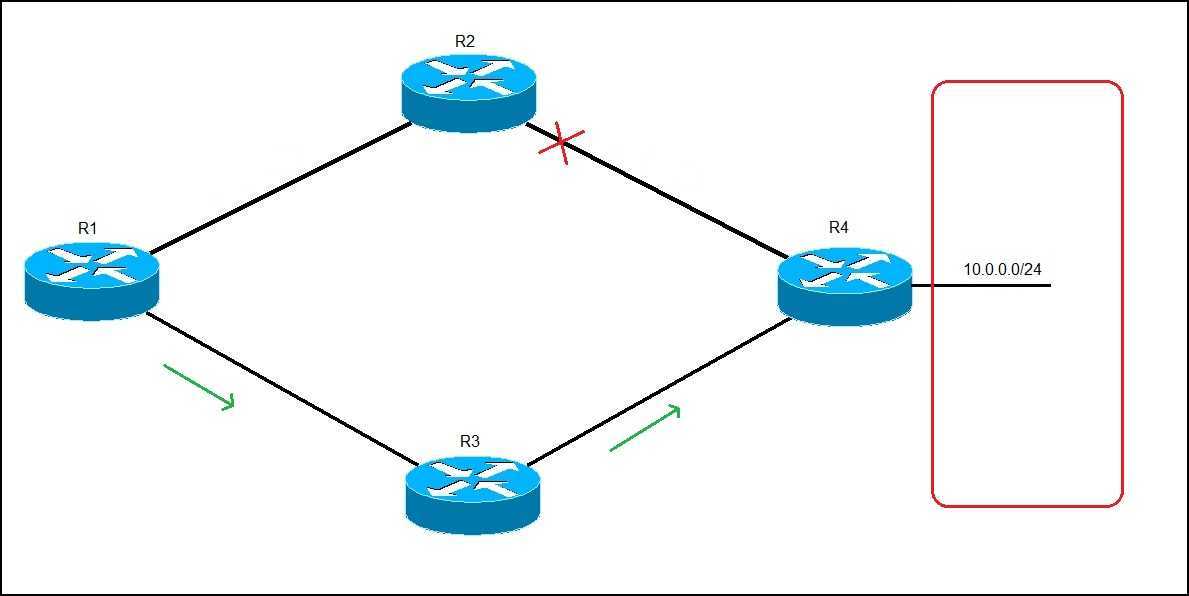Dynamic routes
Dynamic routes are routes learned by using dynamic routing protocols. Routing protocols are configured on routers with the purpose of exchanging routing information. There are many benefits of using routing protocols in your network, including:
- unlike static routing, you don’t need to manually configure every route on each router in the network. You just need to configure the networks to be advertised on a router directly connected to them.
- if a link fails and the network topology changes, routers can advertise that some routes have failed and pick a new route to that network.
The disadvantage of using routing protocols in your network is that they will cost you more in terms of the CPU and bandwidth usage. Routing protocols are also usually more complex to implement.
Consider the following example:
In the picture above you can see that R1 can reach the 10.0.0.0/24 network in two ways: through R2 and R3. Both R2 and R3 advertise their routes using a routing protocol to R1. Let’s say that the route through R2 is the better route that the one going through R3. R1 will accept that route and place it in its routing table. All packets destined for the 10.0.0./24 network will go through R2. Now consider what happens if the link between R2 and R4 fails:
R2 will inform R1 that the link used to reach the 10.0.0.0/24 network has failed and that the route should not be used anymore. But there is another route to 10.0.0.0/24, going through R3; R1 will place that route in its routing table and use it for the packets destined for the 10.0.0.0/24 subnet. R2 will also update its routing table and use the route R1 > R3 > R4 to reach the 10.0.0.0/24 subnet.





